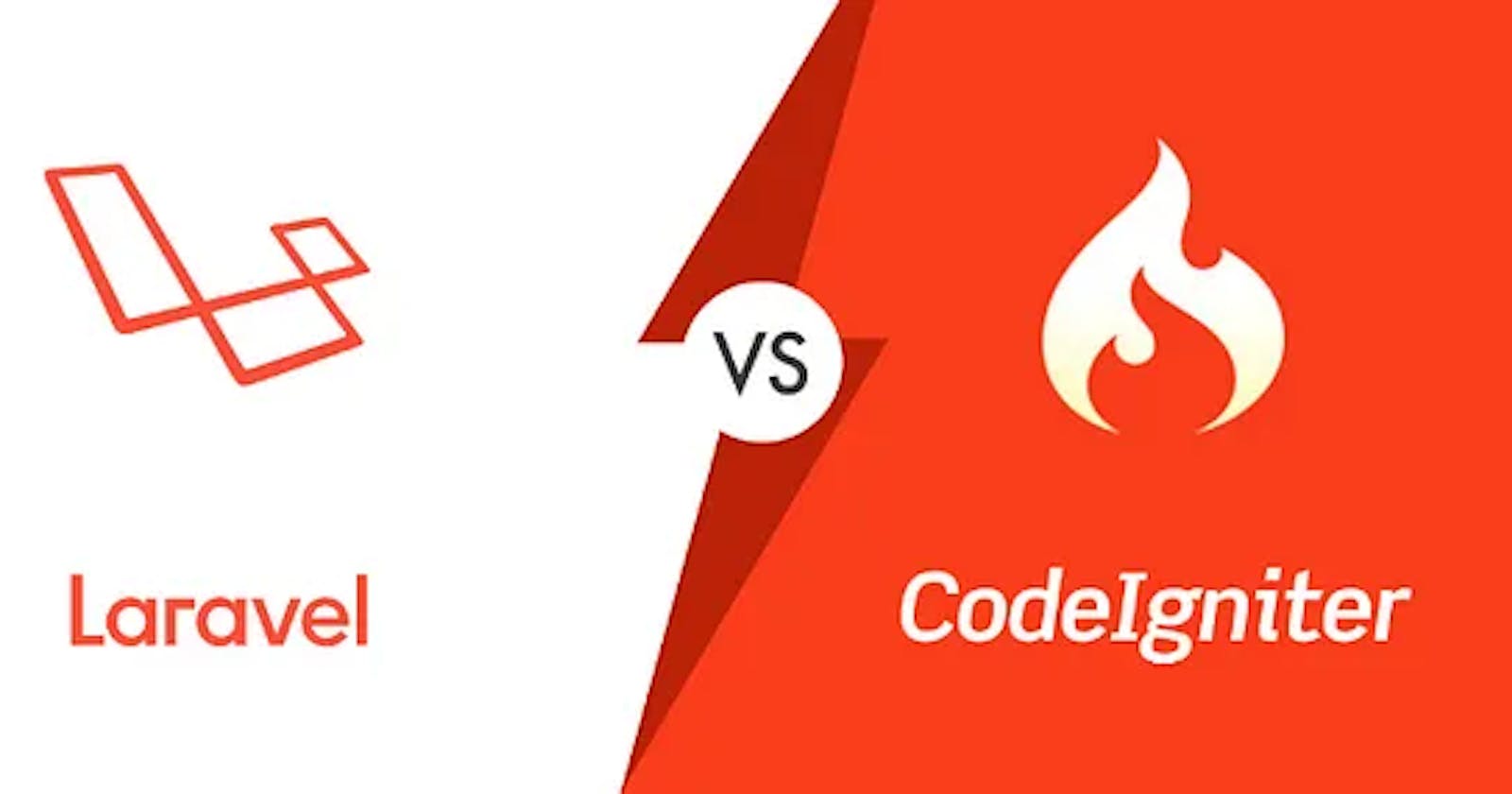CodeIgniter Vs. Laravel: A Head-To-Head Comparison in 2023 ⚡
Choosing one PHP framework between Laravel and CodeIgniter might be tough, but a detailed comparison will be helpful.
One of Laravel’s strengths is its ability to construct sturdy web applications. It includes a comprehensive set of components for backend web development. What makes the Laravel framework particularly fascinating is that it employs PHP, the most widely used web language.
Laravel’s architecture and design are easy for both novice and experienced developers to work with. Despite its relative newness, its eloquent and refined structure enables greater customization options in backend development. These qualities have led companies such as 9GAG, BBC, Crowdcube, MasterCard, and Ratio to embrace the framework in the creation of their products.
CodeIgniter is a PHP framework that offers a lightweight and flexible toolkit for building web applications, with features such as a Model-View-Controller (MVC) architecture, built-in security functionalities, error handling and debugging tools, a powerful database abstraction layer, and support for third-party libraries and plugins. Its simplicity, speed, and small footprint make it an ideal choice for developers who need to quickly create scalable and maintainable applications without sacrificing performance.
Photo by Mohammad Rahmani on Unsplash
Why is it Relevant To Compare Them in 2023?
CodeIgniter Vs. Laravel: Application Architecture and Microservices Compatibility
When selecting a framework, it’s crucial to prioritize flexibility over strict adherence to architecture and guidelines. Frameworks should be used as a guide rather than a set of rules. Let’s compare Laravel and CodeIgniter to determine their flexibility for architecture.
1. Laravel application architecture:
Laravel adheres to the Model-View-Controller (MVC) architectural pattern, which allows for the separation of developer roles for a more comfortable development process. In other words, a frontend developer can work on views while a backend developer is working on controller logic.
The MVC patterns also provide complete control over the application, which can be useful for selecting application-specific routes and customizing how your application appears globally. This enhances the application’s SEO in the long run. Laravel’s MVC architecture makes implementing external APIs and reusing application code simple. As a result, creating immutable backend support for any online application is always possible.
2. Codeigniter application architecture:
Model-View-Controller is the foundation of CodeIgniter. Web pages can have minimal scripting and test-built modules thanks to the MVC architecture. This test-driven development method saves time, increases productivity, and makes interaction with Javascript frameworks easier.
3. Laravel microservices architecture:
PHP supports microservices architecture, and it is clear that Laravel does as well. How does Laravel accomplish this? The software is divided into small building components with roles and responsibilities. These functions communicate with one another via language-independent APIs, allowing the program to be compatible with the microservices’ design. The necessity to use Laravel with microservices architecture has been so strong in recent months that a developer has created a framework called Lumen. It is a leaner, smaller, and lighter variant of Laravel that serves a similar objective.
4. CodeIgniter microservices architecture:
This framework enables you to develop efficient and robust microservices by leveraging PHP’s full-stack features. The microservice-architectural method works best in the test-driven web app using CodeIgniter 3 and solves architectural gaps. Furthermore, it streamlines code and creates an architecture for data handling and integration for optimal automated results. Consequently, you get maximum scalability, performance, and database support.
Laravel Vs. Codeigniter: Performance Comparison
Laravel Usage Statistics
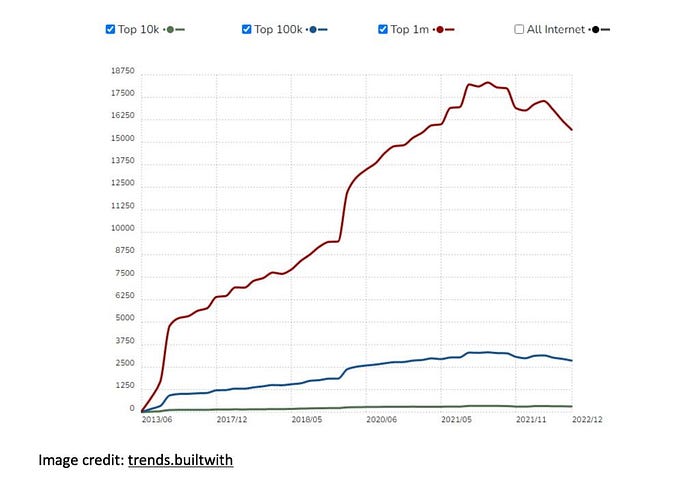
Image credit: trends.builtwith
As per builtwith, 1,664,391 websites are built on the Laravel framework. We know of 821,174 live websites using Laravel, of which 355,005 are in the United States alone.
Top popular websites that are solely built on the Laravel framework:
1. Alison — A free online learning platform that provides education and courses.
2. Barchart — A financial technology firm that offers data, tools, and services for the commodities, stock, and FX markets.
3. Startups — A platform that links entrepreneurs with potential investors, co-founders, and other resources to assist them in starting and growing their businesses.
4. 9GAG — A social networking website that offers memes, GIFs, and other amusing content users create.
5. World Walking — A web and mobile app encouraging users to walk more by providing virtual walking paths worldwide.
6. Invoice Ninja — An open-source billing and invoicing software for freelancers and small enterprises.
7. FinTech Consortium — A global fintech ecosystem builder that unites entrepreneurs, financial institutions, and investors to drive financial technology innovation and growth.
CodeIgniter Usage Statistics
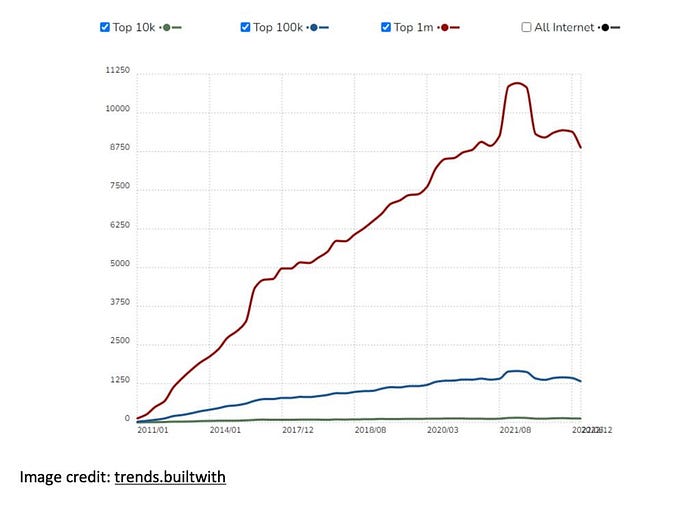
As per builtwith, there are 1,478,297 websites that are built on Laravel framework. We know 572,728 live websites using CodeIgnitor, of which 269,141 sites are in the United States alone.
Top popular websites that are solely built on the Laravel framework:
1. Buffer — A social media management platform.
2. Understood — A website that offers resources and support for parents of children with learning and attention issues.
3. SourceForge — A web-based service that offers free hosting for open-source software development projects.
4. Mura CMS — A content management system built on CodeIgniter.
5. SeatGeek — A ticket search engine that allows users to find and buy tickets to live events.
6. Brandfolder — A digital asset management platform.
7. Shopio — An e-commerce platform for online stores.
8. Badoo — A dating and social networking website
CodeIgniter Vs. Laravel: Which Framework Should You Use?
Both CodeIgniter and Laravel are fantastic PHP frameworks, and both have large and active communities, not to mention guidelines and documentation designed to assist developers in getting started quickly. Yet, in some circumstances, Laravel will be better suited than CodeIgniter and vice versa.
When is CodeIgniter Right for You?
Small to medium-sized web apps can be created quickly.
Creating dynamic websites with an emphasis on simplicity and performance.
Customizing web apps or web portals for small to medium-sized organizations.
Creating e-commerce websites with fundamental features and functionality.
Creating projects with a short learning curve to make it easier for developers to learn and implement the framework.
When is Laravel Right for You?
1. Creating high-level online apps and e-commerce websites.
Creating huge, complicated web apps with sophisticated features and capabilities.
RESTful APIs and Custom web application development for enterprises or organizations with complex workflows and processes.
Developing online apps that involve extensive customization and connection with third-party services.
Developing advanced security features for web apps that provide real-time functionality.
Photo by Towfiqu barbhuiya on Unsplash
CodeIgniter VS Laravel: Head-to-Head Comparison
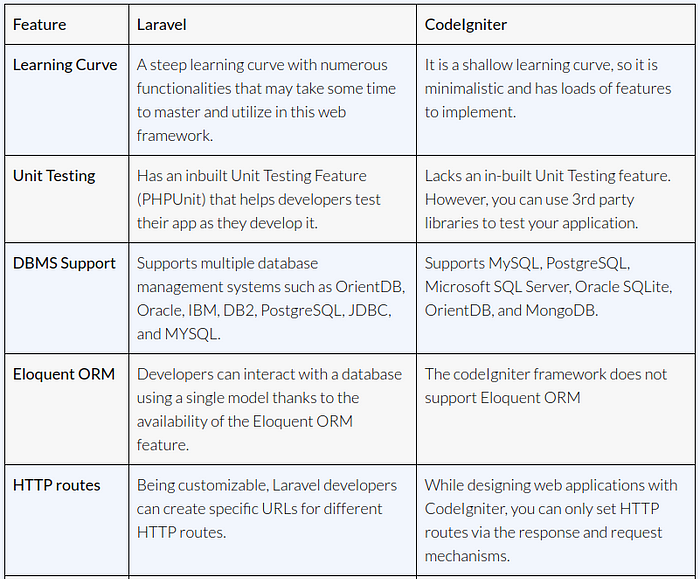
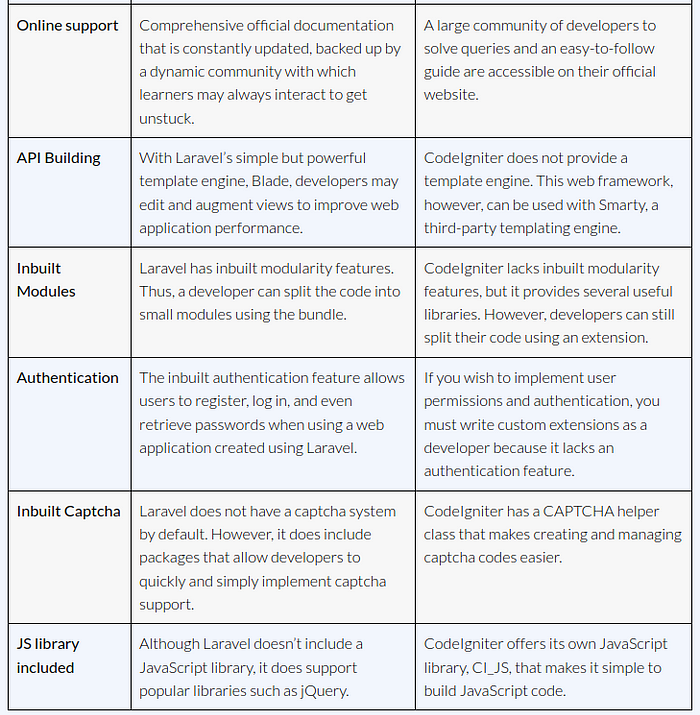
CodeIgniter Vs. Laravel: A Developers’ Choice
Laravel is typically viewed as the more popular choice among developers due to its community support, extensive documentation, and wide range of capabilities.
On the other hand, CodeIgniter is easier to learn, faster to develop, and a fantastic choice for small websites and projects.
Because CodeIgniter provides more freedom and flexibility and the ability to simply extend it with third-party libraries, many developers prefer it for their projects.
As a result, there is no one-size-fits-all response to this topic, and it all depends on your project’s specifications and objectives.
Use CodeIgniter if you need something basic and dependable. If you want additional functionality and flexibility, Laravel might be a better choice. That is ultimately up to you.
Conclusion
CodeIgniter and Laravel are considered the successors of PHP and have gained significant popularity among programmers globally due to their unique characteristics and functionality. Although both frameworks offer their advantages, the choice of the framework should be based on the specific needs of your users and the development process. While both frameworks are reliable and efficient, one may be more suitable for your project than the other. Rather than selecting the most powerful option, choosing the technology that provides the most dependable and efficient solution for your project’s scale and requirements is recommended.

